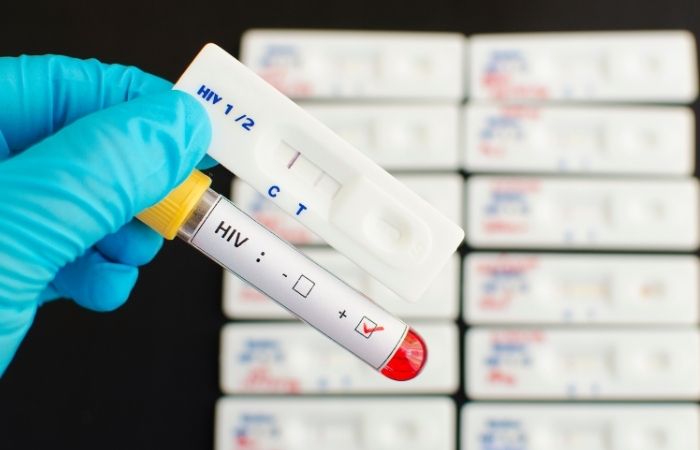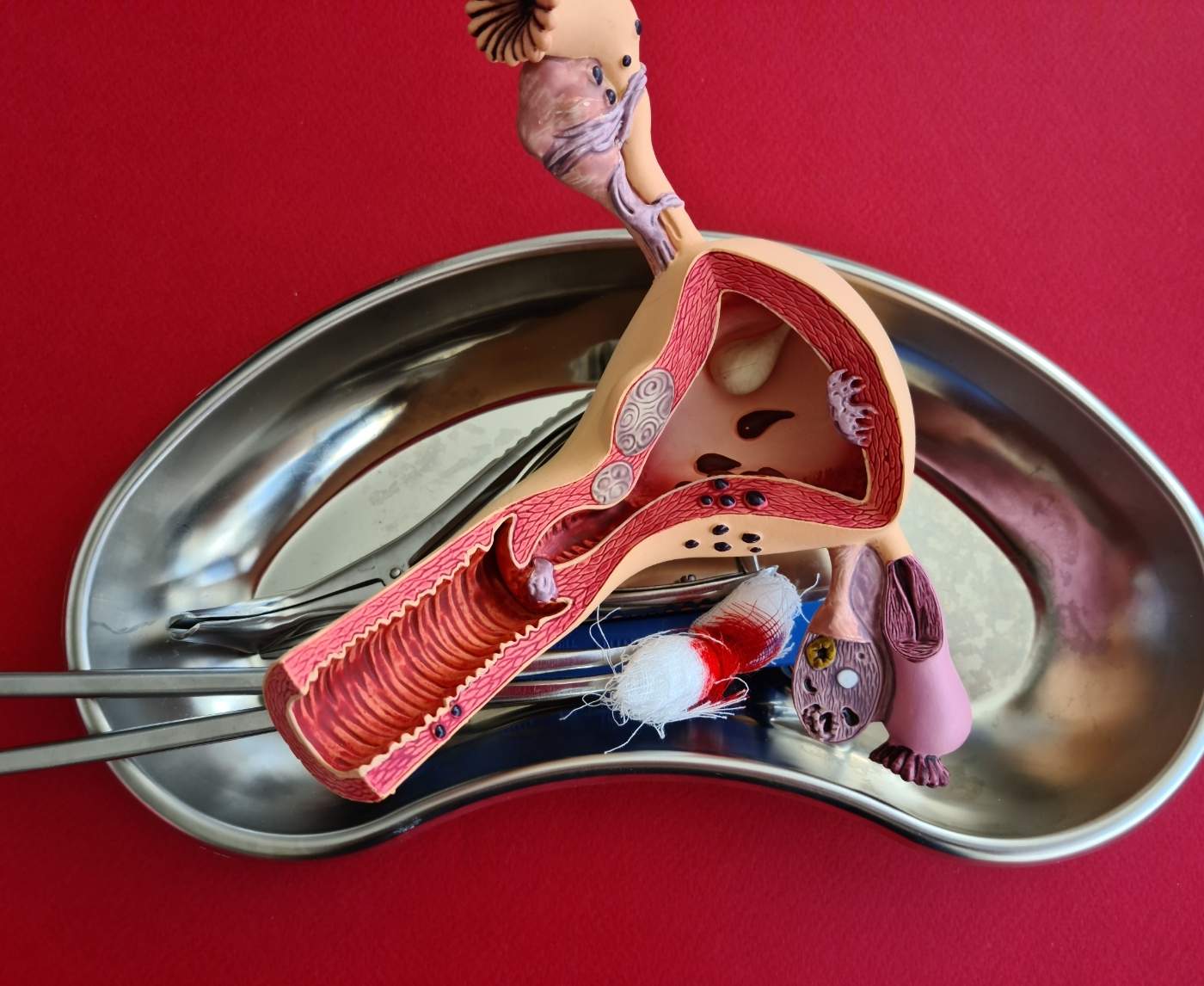Why Acting Fast After HIV Exposure Could Change Everything
The Overlooked Connection Between STDs and Urogenital Cancers
The link between sexually transmitted infections and cancer isn’t a theory—it’s well-documented in medical literature.
Some pathogens have been shown to produce inflammation, cell transformation, and genetic alteration leading to cancer in the long run. Some viruses even insert their DNA into human cells, literally "taking over" the cells and causing cancerous growth.
Worldwide, the World Health Organization (WHO) estimates that 15% of all cancers globally are infectious in nature—and many of these are caused by STDs.
These are the most commonly linked STDs:
- Human Papillomavirus (HPV) – cervical, anal, penile, throat, and vulvar cancer
- HIV (Human Immunodeficiency Virus) – overall cancer vulnerability due to immune suppression
- Chlamydia – linked to cervical and possibly ovarian cancer
- Herpes Simplex Virus (HSV-2) – potential link with cervical and prostate cancer
- Gonorrhea – linked to prostate and bladder cancer risk elevation
- Syphilis, Trichomoniasis, etc. – possible indirect connections via chronic inflammation and co-infection
A recent British Journal of Cancer study reaffirmed that having a history of several STDs can greatly increase the risk of someone developing prostate or cervical cancer, particularly if it is delayed diagnosis and treatment.
This is a global problem—not one isolated to a particular population or geography. In much of the world, routine treatment and testing are unaffordable, and stigma discourages individuals from coming forward early for help. Education, awareness, and increased access to testing (e.g., home STD test kits) are the solution to the problem.

HPV – The Leading Viral Cause of Cancer
Human Papillomavirus (HPV) is the most commonly reported cancer-related STD—although not exclusive to women. There are more than 100 types of HPV, and although the majority of them resolve spontaneously, some high-risk types induce cell changes that result in cancer.
HPV-related cancers
- Cervical cancer (approximately 100% of cases are linked with HPV)
- Anal cancer
- Penile cancer
- Vaginal and vulvar cancer
- Oropharyngeal cancer (back of the throat, including base of tongue and tonsils)
Key Facts
- HPV is the most prevalent STD in the world.
- Among sexually active women, an estimated 80% will get HPV at some point or another.
- The virus is transmitted through vaginal, anal, and oral sex--even in the absence of symptoms.
Order Now $33.99 $49.00 Check Your STD Status in Minutes
Test at Home with Remedium
Papillomavirus (HPV) Test




Testimonial
"I never imagined I would get cancer at 30," says Clara, a survivor of cervical cancer in Brazil. "I did not show symptoms of HPV. They did not realize I had it until they conducted a routine check-up. I had abnormal cells."
Pap smears every 3 years (in women), HPV DNA testing, and HPV vaccines are the best weapons to combat it. In men, ignorance is the best protection—because it cannot be tested so readily.
HIV – Immunosuppression and Enhanced Cancer Risk
HIV itself does not cause most urogenital cancers, but its immunosuppressive effect has a huge role to play in cancer formation.
A healthy immune system can often eliminate abnormal cells before they become cancerous. But in people with HIV, especially those who aren’t receiving antiretroviral therapy (ART), the body can’t keep up.
Common HIV-Linked Cancers
- Kaposi’s Sarcoma (rare skin and organ cancer)
- Non-Hodgkin’s Lymphoma
- Cervical cancer (especially when co-infected with HPV)
- Anal and penile cancers
- Key Facts:
Cancer is a leading cause of death among people with HIV.
Despite treatment, cancer risks remain elevated—especially if ART is delayed.
Early HIV diagnosis, treatment, and ongoing screening are the answers to reducing cancer risk. HIV testing is now quick, discreet, and included in home-testing kits internationally.

Chlamydia – The Silent Threat for Women
Chlamydia is a bacterial infection that is often undetectable because it typically doesn't show symptoms. But it doesn't make it safe.
Untreated chlamydia in the long run will cause pelvic inflammatory disease (PID), infertility, and has been shown to increase cervical and ovarian cancer risk.
Key Facts
- More than 130 million worldwide are infected with chlamydia each year.
- It occurs in those under the age of 25 most.
- A higher risk for cervical cancer was discovered in a study of women with long-term chlamydia infections.
Testimonial
"I ignored my discharge for months. I thought it was normal. When I finally got tested, I had PID, and they said I'd find it hard to get pregnant. I was 22." — Leila, South Africa
Getting a yearly test (more frequently if you have new sex partners) can stop these things from happening. Testing is simple and often includes multi-STD home test kits.
Order Now $69.00 $147.00 Check Your STD Status in Minutes
Test at Home with Remedium
3-in-1 STD Test Kit




For all 3 tests
Herpes and Gonorrhea – What the Data Suggest
Although the relationship between Herpes Simplex Virus (HSV) and cancer is not as well established as HPV, a number of studies indicate that persistent HSV-2 infections are likely to have an ancillary role in cervical and prostate cancer by compromising cellular immunity and causing inflammation.
Gonorrhea, which is a bacterial STD, may also raise the risks of cancer—specifically prostate and bladder cancer—by inducing chronic urogenital inflammation. Inflammation may cause cell damage, which increases the likelihood of abnormal or cancerous cell growth over time.
Key Facts
- More than 490 million individuals worldwide are infected with HSV-2.
- Gonorrhea is increasingly resistant to antibiotics in most nations around the world.
- Chronic prostatitis, which is a common bacterial infection such as gonorrhea, in certain research has been shown to have a 28–45% chance of eventually developing prostate cancer.

Expert Insight
"Time bombs waiting to explode are chronic infections, particularly those tissue-based ones such as those found in the cervix or prostate. The immune system gets weakened, and the abnormal cells are left behind," says infectious diseases doctor Dr. Ana Oliveira, Lisbon.
Early diagnosis and treatment are important—particularly since herpes and gonorrhea are both likely to be asymptomatic in their early phases.
Other STDs with Possible Cancer Connections
Though HPV, HIV, chlamydia, herpes, and gonorrhea are most extensively researched, other STDs could also play a secondary, indirect role in cancer risk:
STDs Potentially Involved
- Syphilis – Bacterial infection which, in advanced stages, causes generalized inflammation and risks of co-infection.
- Trichomoniasis – Associated with vaginal infection and cervical cancer risk when administered in combination with HPV.
- Mycoplasma genitalium – New connections to prostate infection and urethra cancer.
While these infections will not by themselves cause cancer, they can leave one more prone when administered together with high-risk viruses or as a long-term use.
A 2022 analysis in Virology Journal noted that synergistic effects of combination of several STDs—although each individually is of low risk—can multiply the risk of cell damage and chronic illness by a considerable factor.
Diagnosis for these lesser publicized STDs is not as frequent in routine checks—but home testing kits or clinic examinations can include them.
Order Now $45.99 $49.00 Check Your STD Status in Minutes
Test at Home with Remedium
Genital Herpes Test Kit




Practical Solutions – How to Stay Safe
Be Smart About the Risk—now to do something. Better news: you have more say than you might think.
What You Can Do
- Get Tested Regularly – If you're having sex with various or new partners.
- Practice Protection – Condoms cut down most STD risk but are not 100% safe against infection from HPV or herpes.
- Get Vaccinated – HPV vaccine is highly effective and now for both men and women.
- Treat STDs Early – Don't ignore unusual symptoms. Early treatment prevents long-term issues.
- Use At-Home Testing Kits – Comfortable, accurate, and accessible from nearly anywhere on the planet.
Testimonial
"I am out in a remote place, and going to the clinic was just too far away. The at-home test kit was a lifesaver for me. It detected something that I didn't even know I had." — Daniel, 34, Australia
Taking control of your sexual health is not just a matter of today—it's keeping from happening damage down the road.

What the Statistics Say
Statistics are a dismal read: cancer and infection are two sides of one coin. Not all STDs result in cancer, but the ones that cause a large number of cancers around the world.
Quick Stats
- HPV is responsible for more than 600,000 cancers each year worldwide.
- In regions with poor access to screening, cervical cancer is one of the leading causes of death in women.
- HIV patients have a maximum of 6x higher risk of developing certain urogenital cancers depending on treatment status.
- A 2023 meta-analysis confirmed that chronic prostatitis doubled the risk of prostate cancer in infected men.
Early screening, mass immunization, and improved access to treatment can prevent hundreds of thousands of cancer cases annually worldwide.
Expert Opinions and Case Studies
Medical professionals worldwide insist that STDs be viewed as something more than short-term ailments. They can potentially lay the groundwork for long-term effects, such as urogenital cancers.
Dr. Miriam Adeyemi, Infectious Disease Specialist (Lagos, Nigeria)
"In a number of my patients, cancer was diagnosed years following an undiagnosed infection. When they finally knew what had occurred, it was too late to turn back the clock. Routine STD screening would have made all the difference."
Dr. Thomas Berger, Urologist (Berlin, Germany)
"We have a distinct pattern. Men with chronic prostatitis, typically caused by infections like gonorrhea or chlamydia, are presenting later in life with prostate abnormalities. It's not by chance—it's cause and effect."
Order Now $189.00 $490.00 Check Your STD Status in Minutes
Test at Home with Remedium
10-in-1 STD Test Kit




For all 10 tests
Case Study: HPV and Cervical Cancer
One Colombian public health study tracked women with long-term HPV infections for ten years. Results indicated that those who were tested for high-risk types of HPV and did not undergo treatment or follow-up care were four times as likely to be diagnosed with cervical cancer compared to those monitored and treated on a regular basis.
In India, a reproductive health centre found more cervical and ovarian problems in women with untreated chlamydia. Almost 30% of their cases of infertility came directly from previous, undiagnosed STDs.
A Historical Perspective on STDs and Cancer Risk
The theory that STDs cause cancer is not recent, but it was not always popular.
- It was the 1970s when German virologist Harald zur Hausen first linked HPV with cervical cancer, for which he subsequently won a Nobel Prize.
- Prior to that, cervical cancer was not clear to anybody—genetics or poor hygiene was suspected of causing it.
- In the 1980s and the 1990s, HIV/AIDS research made an exponentially wider correlation between immune suppression and cancer.
- It wasn't until the 2000s and later that large-scale epidemiologic studies began to establish clear statistical links between long-term STDs and other urogenital cancers such as prostate and anal cancer.
Thanks to international research and advances in testing, we're now better positioned to connect the dots—and prevent disease before it's fatal.

What the Future Holds – Trends in STD and Cancer Prevention
The future is promising for stopping cancer from STDs, given the continued advance of science and public health.
- More vaccination of boys and men, as well as girls and women, against HPV
- Cheaper, more accurate, and more convenient at-home multi-STD test kits
- Telemedicine becoming more common for sexual healthcare in rural or stigmatized settings
- Use of artificial intelligence in diagnostics to detect cellular changes associated with cancer at an early stage
- Inclusion of cancer screening and STD clinics and vice versa
Pressure to take sexual health education onto the world stage is also gaining ground, de-stigmatizing the test and inviting early treatment.
Practical Applications – What This Means for You
Here's how you can put this knowledge into action—whether you're sexually active, in a monogamous relationship, or simply investing in your future health.
Apply This Knowledge
Don't minimize STDs
Not even the silent ones. You're fine, but your body might not be.
Take charge, don't wait. Appoint annual appointments for testing or purchase an in-home STD test, particularly if you're not in a stable long-term relationship.
Communicate with your partner(s).
Open discussion of test history and risk for STD is prevention's ticket.
Vaccinate.
If you qualify, receive the HPV vaccine. One of the strongest weapons against cancer that we possess.
Look out for warning signs.
Discharge, pelvic discomfort, or pain upon urination are all warning signs that you should have checked out.
These steps not only safeguard you but the people you care about.
Check Your STD Status in Minutes
Test at Home with Remedium6-in-1 STD Test Kit

 For Men & Women
For Men & Women Results in Minutes
Results in Minutes No Lab Needed
No Lab Needed Private & Discreet
Private & DiscreetOrder Now $119.00 $294.00
For all 6 tests
Common Misconceptions About STDs and Cancer
Even as of 2025, a lot of myths and misconceptions are out there. Let's debunk some.
- Misconception #1: Only women need to worry about HPV
- Reality: HPV can infect both males and females. Men can be infected and spread high-risk strains that lead to anal, penile, and throat cancer. The vaccine should be taken by both males and females.
- Misconception #2: You'll know if you have an STD
- Reality: Most STDs are "silent," or they don't have clear symptoms. That includes chlamydia, gonorrhea, HPV, and even HIV in its earliest stages.
- Misconception #3: Cancer happens only with untreated HIV
- Reality: HIV elevates overall cancer risk, but other STDs such as HPV, chlamydia, and herpes also have powerful cancer links—even among HIV-negative individuals.
- Misconception #4: Home STD tests are not reliable
- Reality: Great multi-STD test kits are highly accurate, often employing the same lab procedures as clinics. They're particularly well worth it for early detection and routine screening.
- Misconception #5: If you're monogamous, you don't need testing
- Reality: Even if you're in a committed relationship, testing is worth it—especially if either of you has had other partners or there's been a break in monogamy.
Knowing your status makes it easier to take care of yourself and your partners.
FAQs
1.- Which STD has the greatest potential to cause cancer?
HPV is the most frequently associated STD with cancer, namely cervical, anal, and penile cancer.
2.- Can a bacterial STD such as chlamydia actually induce cancer?
Yes. Chronic infection with chlamydia causes pelvic inflammation and has been associated with a greater risk of cervical and ovarian cancer.
3.- How do I know if I have a cancer-causing STD?
The only way to know for certain is through regular STD testing. The majority of lethal infections are asymptomatic.
4.- Are at-home STD test kits safe to use?
Yes. Good home kits provide confidential, accurate testing. Look for multi-STD panels with lab-quality results.
5.- Is the HPV vaccine only for teenagers?
No. While it is most effective if taken prior to exposure, individuals up to the age of 45 can benefit, particularly if sexually active.
6.- Can males also develop cancer from STDs?
Yes. Males can develop anal, penile, and prostate cancer from HPV, HIV, gonorrhea, and others.
7.- What are the early symptoms of STD-related cancer?
It depends on the type of cancer, but symptoms can include unusual discharge, bleeding, pain, or difficulty urinating. Symptoms are not present in most cases until late in the disease.
8.- What if I test positive?
Seek treatment right away. Most STDs are curable, and early treatment can prevent cancer-related complications.
9.- Do condoms completely prevent STD-related risk of cancer?
Condoms reduce risk but not entirely. Viruses like HPV and HSV are transmitted by skin-to-skin contact.
10.- How frequently should I be tested?
At least once a year if you are sexually active. More frequently if you have a new partner or have symptoms.

Protect Yourself and Those You Love
The bottom line? If STDs are not treated over the long term, they could put you at risk for urogenital cancers. But you have the power to prevent that from happening.
Whether it's HPV that leads to cervical changes, HIV that compromises your immune system, or chronic gonorrhea that inflames your prostate—these are risks that can be avoided.
You don't have to wait for symptoms. You don't have to endure judgment. And you don't have to go to a clinic if you don't want to. Today, you can:
- Order an at-home STD test kit—quick, discreet, and accurate
- Schedule an appointment with a trusted healthcare provider
- Pass this on to someone you love—it may make all the difference
It's time to shatter the stereotype that STDs are short-lived or humiliating. Left unchecked, they have long-term consequences. But armed with information, a test, and a little bravery, you can get a step ahead—and guard your future.
Sources
1.- Mayo Clinic - STDs and Their Long-Term Effects
2.- Yale Medicine - Sexually Transmitted Infections
3.- World Health Organization - Global STD Statistics
4.- Health.com - Types of STDs and Their Risks
5.- NCBI - Long-Term Effects of STDs in Women










